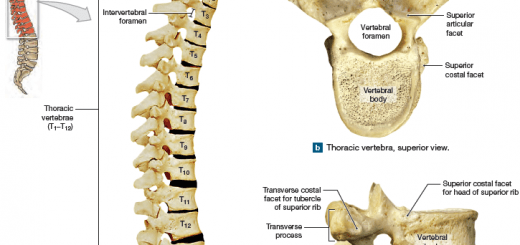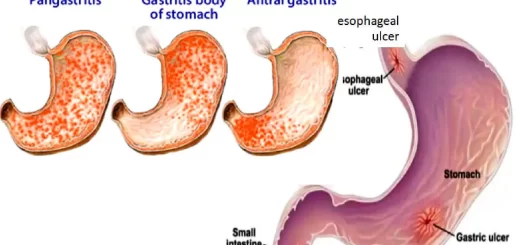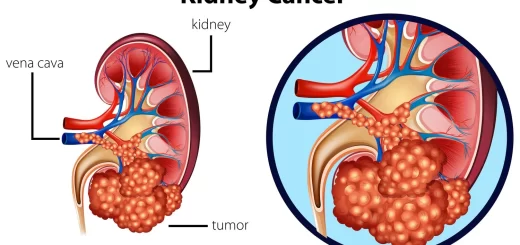Elbow joint function, structure, movements, ligaments and Small Joints of the Hand
Elbow joint is the joint between the upper and lower parts of the arm. It has prominent landmarks such as the olecranon, the elbow pit, the lateral and medial epicondyles, and the elbow joint. It is the synovial hinge joint between the humerus in the upper arm and the radius and ulna in the forearm which allows the forearm and hand to be moved towards and away from the body.
Elbow joint
The elbow joint includes three different portions surrounded by a common joint capsule. These joints are between the three bones of the elbow, the humerus of the upper arm, and the radius and the ulna of the forearm, The elbow name in Latin is cubitus, the word cubital is used in some elbow-related terms, as in cubital nodes for example.
Type of joint: Synovial, Uniaxial, and Hinge. Articular surfaces: The elbow joint is a composite joint formed of 2 parts:
- Humero-ulnar part; the articulation is between the trochlea and trochlear notch of the ulna.
- Humero-radial part; the articulation is between the capitulum and the upper surface of the head of the radius.
The capsule is attached to the margins of the articular parts of bones. The capsule is attached inferiorly to the annular ligament so the elbow joint is continuous with the superior radioulnar joint (the 2 joints together form the cubital articulation).
Synovial membrane lines all the structures inside the capsule of the elbow joint except the articular cartilage. Inferiorly, it is continuous with the synovial membrane of the superior radioulnar joint.
Ligaments related to elbow joint
- The ulnar collateral (medial) ligament is a thick triangular ligament closely related to the ulnar nerve. The ligament is attached to the medial epicondyle superiorly and the medial surface of the upper end of the ulna inferiorly.
- The radial collateral (lateral) ligament is a triangular ligament that connects the lateral epicondyle to the upper border of the annular ligament.
Movements of the elbow joint
The joint is a uniaxial joint, so it moves around one transverse axis. The movements are flexion-extension. During flexion of the elbow, the head of the radius lies inside the radial fossa above the capitulum, and the coronoid process of the ulna lies inside the coronoid fossa above the trochlea. While in extension, the olecranon process lies inside the olecranon fossa.
- Flexion: This movement is done by the brachialis, biceps, and brachioradialis.
- Extension: This movement is done by the triceps and anconeus.
Radioulnar Joints (Superior- Middle- Inferior)
Superior radioulnar joints
Type of joint: Synovial- Uniaxial- pivot.
Articular surface:
- The radial notch of ulna & Annular ligament.
- Circumference of the head of the radius.
Each of the articular surfaces is covered by hyaline cartilage, The inner surface of the annular ligament is also lined with hyaline cartilage. The capsule is attached to the margins of the articular parts of bones. Synovial membrane lines all the structures inside the joint except the articular surfaces. Superiorly, it is continuous with the synovial membrane of the elbow joint.
Ligaments related to superior radioulnar joint
- The annular ligament is a strong fibrous band that is attached to the margins of the radial notch of the ulna and surrounds the circumference of the head of the radius. The upper border is continuous with the capsule of the elbow joint while the lower border is free surrounding the neck of the radius.
- Quadrate ligament is a thin fibrous band that extends between the neck of radius and the area below the radial the notch of the ulna.
Middle radioulnar joints
It is a fibrous joint between the radius and ulna where both bones are connected by an interosseous membrane. The fibers of this membrane are directed downwards and medially from radius to ulna. Its function is to absorb the shock transmitted from the hand through the wrist joint, from radius to ulna, then partly transmits it to the elbow.
Interior radioulnar joints
It is a uniaxial, pivot synovial joint between the head of the ulna and the ulnar notch of the radius. It has the same movements of the superior radioulnar joint.
Movements of radioulnar joints
- Supination: This movement is produced by the biceps brachii and the supinator.
- Pronation: This movement is produced by pronator teres and pronator quadratus.
Supination is the anatomical position of the forearm and is characterized by:
- The palm faces anteriorly.
- The thumb is laterally.
- The radius and ulna are parallel where the radius is lateral to the ulna.
Pronation is when the radius rotates crossing the ulna, thus it is characterized by:
- The palm faces posteriorly.
- The thumb is medially.
- The radius and ulna are crossed.
Wrist (Radiocarpal) joint
Type of joint: Synovial, Biaxial, Ellipsoid.
Articular surface:
- The inferior surface of the lower end of radius & the inferior surface of the articular disc.
- The articular surface of the proximal row of carpal bone (Scaphoid, Lunate, and Triquetral).
- The scaphoid and lunate articulate with the lower end of the radius while the triquetral articulates with the articular disc.
- The articular disc is triangular cartilage that is attached between the lower end of the radius and that of the ulna.
- The ulna does not share in the wrist joint so it is called a radiocarpal articulation.
The capsule is thin and attached to the margins of the articular parts of bones. Synovial membrane lines all the structures inside the capsule of the wrist joint except the articular surfaces. This synovial membrane is not continuous with that of the inferior radioulnar joint.
Ligaments related to wrist joint
- Ulnar collateral (medial) ligament: it extends between the styloid process of ulna and pisiform and triquetral.
- Radial collateral (lateral) ligament: it extends between the styloid process of radius and scaphoid bone.
- Palmar (anterior) radicarpal ligament.
- Dorsal radiocarpal ligament.
- Palmar ulnocarpal ligament.
Movements of wrist joints
The joint is a Biaxial joint, so it moves around two axes. The movements are:
- Flexion: This movement is done by the flexor carpi radialis flexor carpi ulnaris and palmaris longus. These muscles are helped by the flexor of the fingers.
- Extension: This movement is done by the extensor carpi radialis longus and brevis and extensor carpi ulnaris. These muscles are helped by the extensor of the fingers.
- Adduction: This movement is done by the flexor carpi ulnaris and extensor carpi ulnaris.
- Abduction: This movement is done by the flexor carpi radialis, extensor carpi radialis longus, and brevis.
Small Joints of the Hand
- Intercarpal joints are plane synovial joints between the carpal bones themselves. The intercarpal joints between the proximal and distal rows of carpal joints form S- shape transverse intercarpal joints.
- Carpometacarpal joints are the joints between the distal row of carpal bones and the metacarpal bones. All of them are plane synovial joints except the first carpometacarpal joints (of the thumb) which are the saddle, biaxial, synovial joints.
- Intermetacarpal joints are plane synovial joints between the adjacent parts of the bases of the medial 4 fingers.
- Metacarpophalangeal joints are the joints between the metacarpal bones and the proximal phalanges. They are ellipsoid, biaxial synovial joints.
- Interphalangeal joints are the joints between the phalanges of each finger. They are hinge joints. Each of the medial four fingers has a proximal and distal interphalangeal joint as each is formed of 3 phalanges. The thumb is formed only of 2 phalanges so it has only one interphalangeal joint.
Types of joints of upper limb, Ligaments & movements of the shoulder joint
Nerves of forearm and hand, Nerve injuries types & causes
Forearm bones, anatomy, function & Skeleton of the hand
Flexors of forearm, Forearm muscles, structure, function & anatomy
Blood vessels of forearm & hand, Veins and Lymphatics of the upper limb



